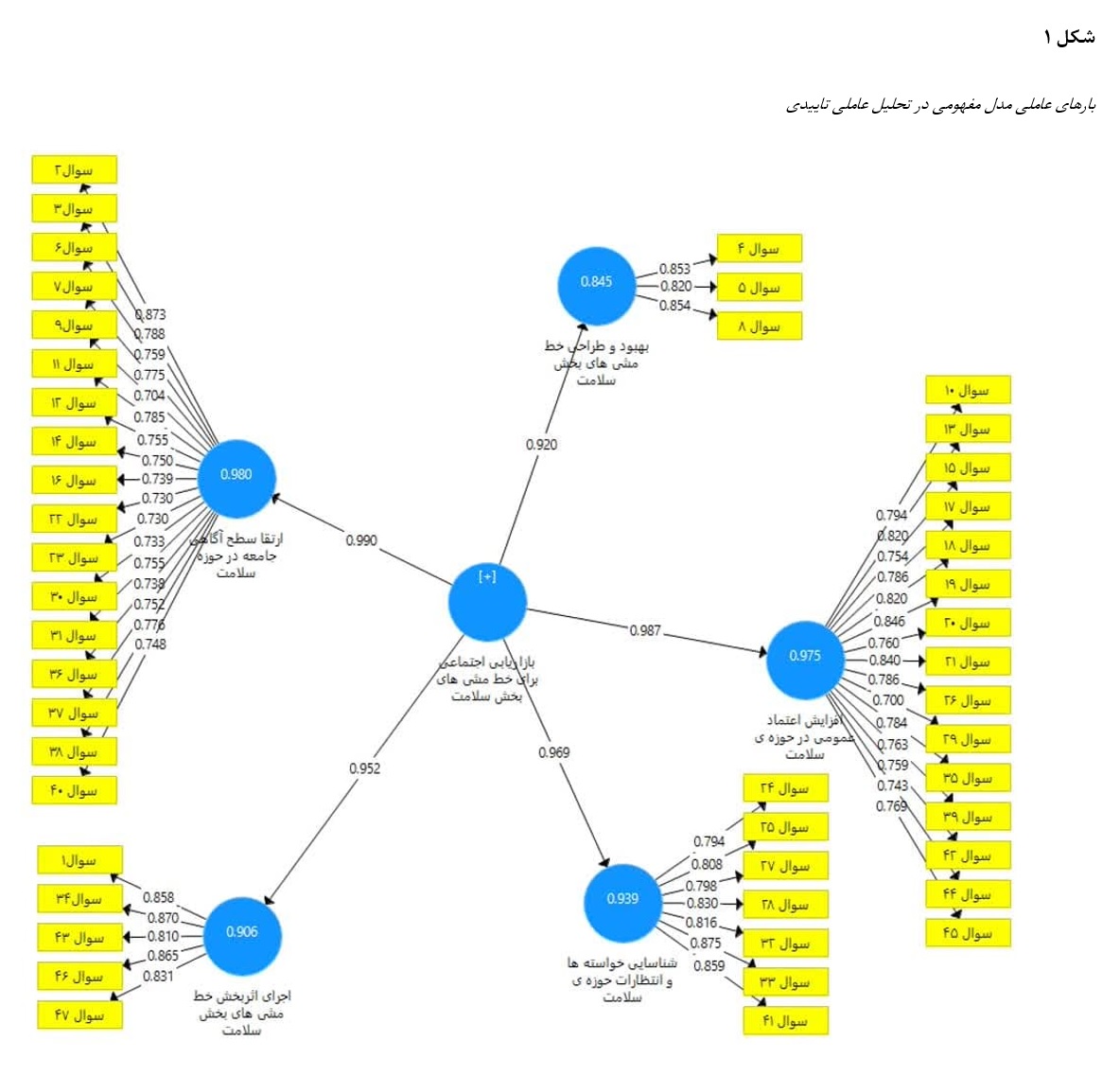مروری بر پژوهشهای انجام شده در ارزیابی عمکرد صندوقهای بازنشستگی با استفاده از تحلیل پوششی دادهها
کلمات کلیدی:
صندوق بازنشستگی, تحلیل پوششی دادهها, DEA, ارزیابی عملکرد (کارایی)چکیده
در این پژوهش شرحی از روشهای مبتنی بر تحلیل پوششی دادهها از جمله روشهای CCR، BCC، SBM، تحلیل پوششی با دادههای ترکیبی (MV-DEA) و یک روش شبکهای دومرحلهای بیان میشود. همچنین انواع صندوقهای بازنشستگی از دیدگاههای مختلف از جمله صندوقهای بازنشستگی مزیت معین و مشارکت معین و ترکیبی، خصوصی و دولتی، باز و بسته، صندوقهای با مسئولیت اجتماعی (اخلاقی) و مسئولیتناپذیر، صندوقهای مستقل، نیمهمستقل و کامل معرفی میشود. با مرور پژوهشهای مختلف که در آن با استفاده از روشهای تحلیلی یاد شده، میزان کارایی هر یک از انواع صندوقها با سایر صندوقها مقایسه شده و عملکرد آنها مورد ارزیابی قرار گرفته، نتایج بدست آمده را مورد بررسی قرار میدهیم. این پژوهشها در کشورهای مختلف با ساختارهای اقتصادی متفاوت انجام شده است. نتایج بدست آمده در پژوهشها متنوع هستند. با مشاهده نتایج بهدستآمده درمییابیم که یکی از علتهای تنوع در نتیجهگیریها میتواند تفاوت در انتخاب دادههای ورودی و خروجی برای هر پژوهش باشد. همچنین ساختارهای فرهنگی و سیاسی متفاوت در مناطق مختلف نیز میتواند در نتایج بدست آمده مؤثر باشد.
مراجع
Adler, N., & Golany, B. (2001). Evaluation of deregulated airline networks using data envelopment analysis combined with principal component analysis with an application to Western Europe. European Journal of Operational Research, 132, 260-273. https://doi.org/10.1016/S0377-2217(00)00150-8
Ali, A. S. (2016). Efficiency of private pension companies in Turkey using data envelopment analysis (DEA). In Chaos, complexity and leadership 2014 (pp. 495-505). Springer International Publishing. https://doi.org/10.1007/978-3-319-18693-1_45
Avkiran, N. K. (1999). An application reference for data envelopment analysis in branch banking: Helping the novice researcher. International Journal of Bank Marketing, 17, 206-220. https://doi.org/10.1108/02652329910292675
Avkiran, N. K. (1999). The Evidence on Efficiency Gains: The Role of Mergers and the Benefits to the Public. Journal of Banking and Finance, 23, 991-1013. https://doi.org/10.1016/S0378-4266(98)00129-0
Badrizadeh, M., & Paradi, J. C. (2020). Pension Funds and Mutual Funds Performance Measurement with a New DEA (MV-DEA) Model Allowing for Missing Variables. In Data Science and Productivity Analytics (Vol. 290, pp. 391-413). Springer. https://doi.org/10.1007/978-3-030-43384-0_14
Balcer, Y., & Sahin, I. (1979). A Study of Private Pensions in Ontario. https://irp.wisc.edu/publications/dps/pdfs/dp55379.pdf
Barr, N., & Diamond, P. (2006). The economics of pensions. Oxford Review of Economic Policy, 22, 15-39. https://doi.org/10.1093/oxrep/grj002
Barrientos, A., & Boussofiane, A. (2005). How efficient are pension fund managers in Chile? Revista de Economia Contemporanea, 9, 289-311. https://doi.org/10.1590/S1415-98482005000200003
Barros, C., & Garcia, M. (2006). Performance Evaluation of Pension Funds Management Companies with Data Envelopment Analysis. Risk Management and Insurance Review, 9(2), 165-188. https://doi.org/10.1111/j.1540-6296.2006.00092.x
Bijlsma, M., Bonekamp, J., van Ewijk, C., & Haaijen, F. (2018). Funded pensions and economic growth. De Economist, 166, 337-362. https://doi.org/10.1007/s10645-018-9325-z
Bodie, Z., Marcus, A., & Merton, R. (1988). Defined benefit vs. defined contribution pension plans: what are the real trade-offs? In Pensions in the U.S. Economy. University of Chicago Press. https://ideas.repec.org/h/nbr/nberch/6047.html
Bui, Y. (2013). Measuring efficiency of Australian superannuation funds using data envelopment analysis Flinders University]. https://www.apra.gov.au/sites/default/files/Bui-Measuring-efficiency-of-Australian-superannuation-funds-using-data-envelopment-analysis.pdf
Bui, Y. H., Delpachitra, S., & Ahmed, A. D. (2016). Efficiency of Australian superannuation funds: A comparative assessment. Journal of Economic Studies, 43, 1022-1038. https://doi.org/10.1108/JES-05-2015-0088
Callen, J. (1991). Data envelopment analysis: partial survey and applications for management accounting. Journal of Management Accounting Research, 3, 35-55. https://www-2.rotman.utoronto.ca/facbios/file/Callen1991JMAR-DEA.pdf
Charnes, A., & Cooper, W. W. (1962). Programming with linear fractional functional. Naval Research Logistics Quarterly, 9, 181-186. https://doi.org/10.1002/nav.3800090303
Charnes, A., Cooper, W. W., & Rhodes, E. (1978). Measuring the efficiency of decision making units. European Journal of Operational Research, 2, 429-444. https://doi.org/10.1016/0377-2217(78)90138-8
Chen, Y., Cook, W. D., Ning, L., & Zhu, J. (2009). Additive efficiency decomposition in two-stage DEA. European Journal of Operational Research, 196, 1170-1176. https://doi.org/10.1016/j.ejor.2008.05.011
Cholos, P. (1997). An examination of budgetary inefficiency in education using data envelopment analysis. Financial Accountability & Management, 13, 55-69. https://doi.org/10.1111/1468-0408.00026
Chu, S. F., & Lim, G. H. (1998). Share performance and profit efficiency of banks in an oligopolistic market: evidence from Singapore. Journal of Multinational Financial Management, 8, 155-168. https://doi.org/10.1016/S1042-444X(98)00025-5
Coelli, T., Rao, P. D. S., O'Donnel, C. J., & Battese, G. E. (2005). An Introduction to Efficiency and Productivity Analysis, 2nd ed. Springer Science + Business Media, Inc. https://link.springer.com/book/10.1007/b136381
Cook, W. D., & Seiford, L. M. (2009). Data envelopment analysis (DEA)-Thirty years on. European Journal of Operational Research, 192, 1-17. https://doi.org/10.1016/j.ejor.2008.01.032
Cook, W. D., Zhu, J., Bi, G., & Yang, F. (2010). Network DEA: Additive efficiency decomposition. European Journal of Operational Research, 207, 1122-1129. https://doi.org/10.1016/j.ejor.2010.05.006
Cummins, J., Tennyson, S., & Weiss, A. (1999). Consolidation and Efficiency in the US Life Insurance Industry. Journal of Banking and Finance, 23, 325-357. https://doi.org/10.1016/S0378-4266(98)00089-2
Davis, P. E. (1995). Pension Funds, Retirement-Income Security and Capital Markets, an International Perspective. Oxford University Press. https://academic.oup.com/book/2547/chapter-abstract/142859215?redirectedFrom=fulltext
Draženović, B. O., Hodžić, S., & Maradin, D. (2019). The efficiency of mandatory pension funds: Case of Croatia. South East European Journal of Economics and Business, 14, 82-94. https://doi.org/10.2478/jeb-2019-0015
Efron, B. (1992). Bootstrap methods: another look at the jackknife. In Breakthroughs in statistics: Methodology and distribution (pp. 569-593). Springer New York. https://doi.org/10.1007/978-1-4612-4380-9_41
Ellis, K., Tobin, A., & Tracey, B. (2008). Investment Performance, Asset Allocation and Expenses of Large Superannuation Funds. 2-20.
Färe, R., & Grosskopf, S. (2000). Network DEA. Socio-Economic Planning Sciences, 34, 35-49. https://doi.org/10.1016/S0038-0121(99)00012-9
Farell, M. J. (1957). The Measurement Of Productive Efficiency. Journal Of The Royal Statistical Society A, 120, 253-281. https://doi.org/10.2307/2343100
Ferrier, G. D., & Lovell, C. A. (1990). Measuring cost efficiency in banking: econometric and linear programming evidence. Journal of Econometrics, 46, 229-245. https://doi.org/10.1016/0304-4076(90)90057-Z
Ferrier, G. D., Lovell, C. A., & Tirtiroglou, D. (1993). An international comparison of scale economies in banking. Journal of Financial Services Research, 7, 111-125. https://doi.org/10.1007/BF01046901
Fields, J. A., & Murphy, N. B. (1989). An analysis of efficiency in the delivery of financial services: the case of UK insurance agencies. Journal of Financial Services Research, 2, 343-356. https://doi.org/10.1007/BF00114412
Galagedera, D. U. A., Roshdi, I., Fukuyama, H., & Zhu, J. (2018). A new network DEA model for mutual fund performance appraisal: An application to US equity mutual funds. Omega, 77, 168-179. https://doi.org/10.1016/j.omega.2017.06.006
Galagedera, D. U. A., & Silvapulle, P. (2002). Australian Mutual Fund Performance Appraisal Using Data Envelopment Analysis. Managerial Finance, 28(9), 60-73. https://doi.org/10.1108/03074350210768077
Gokoz, F., & Çandarli, D. (2011). Data envelopment analysis: A comparative efficiency measurement for Turkish pension and mutual funds. International Journal of Economic Perspectives, 5, 261-281. https://www.researchgate.net/publication/287311855_Data_envelopment_analysis_A_comparative_efficiency_measurement_for_Turkish_pension_and_mutual_funds
Gregoriou, G. N., Sedzro, K., & Zhu, J. (2005). Hedge fund performance appraisal using data envelopment analysis. European Journal of Operational Research, 164(2), 555-571. https://doi.org/10.1016/j.ejor.2003.12.019
Hasanudin, S. W., & Pangestuti, I. R. D. (2017). Managing the pension fund to improve portfolio performance: An empirical study on employer pension funds in Indonesia. International Journal of Civil Engineering and Technology, 8, 714-723. https://iaeme.com/MasterAdmin/Journal_uploads/IJCIET/VOLUME_8_ISSUE_8/IJCIET_08_08_072.pdf
Jensen, M. C., & Meckling, W. H. (2019). Theory of the firm: Managerial behavior, agency costs and ownership structure. In Corporate Governance (pp. 77-132). Gower. https://www.sciencedirect.com/science/article/pii/0304405X7690026X
Kadarisman, & Wahyuni, S. (2010). Manajemen Dana Pensiun Indonesia. PT. Mediantara Semesta. https://books.google.nl/books/about/Manajemen_dana_pensiun_Indonesia.html?id=eJmoZwEACAAJ&redir_esc=y
Kao, C. (2014). Network data envelopment analysis: A review. European Journal of Operational Research, 239, 1-16. https://doi.org/10.1016/j.ejor.2014.02.039
Kompa, K., & Witkowska, D. (2016). Efficiency of private pension funds in Poland. AESTIMATIO, The IEB International Journal of Finance, 12, 48-65. https://doi.org/10.5605/IEB.12.3
Kurtaran, A., Karakaya, A., & Dağlı, H. (2013). Improvement of private pension system in Turkey and measurement of its efficiency with DEA. International Journal of Economics and Finance, 5(11), 163-173. https://doi.org/10.5539/ijef.v5n11p163
Lemke, T. P., & Lins, G. T. (2010). ERISA for Money Managers. Thomson Reuters/West. https://books.google.nl/books/about/ERISA_for_Money_Managers.html?id=af-_YgEACAAJ&redir_esc=y
Liebenstein, H. (1966). Allocative efficiency vs. X-efficiency. American Economic Review, 56(3), 392-415. https://www.jstor.org/stable/1823775
Lin, S.-W., Lu, W.-M., & Lin, F. (2021). Entrusting decisions to the public service pension fund: An integrated predictive model with additive network DEA approach. Journal of the Operational Research Society, 72, 1015-1032. https://doi.org/10.1080/01605682.2020.1718011
Mehregan, M. R. (2004). Quantitative Models in Evaluating Organizational Performance. University of Tehran Faculty of Management Publications.
Miszczyńska, D., & Miszczyński, M. (2007). Application of DEA method to the evaluation of the efficiency of Polish open pension funds in the years 2004-2006. Multiple Criteria Decision Making, 2, 101-116. https://mcdm.ue.katowice.pl/files/papers/mcdm06(2)_5.pdf
Nasser Katib, M., & Matthews, K. (1999). A Nonparametric approach to efficiency measurement in the Malaysian banking sector. 113. https://research-staging.nottingham.edu.cn/en/publications/a-non-parametric-approach-to-efficiency-measurement-in-the-malays
Njuguna, A. G. (2010). Strategies to improve pension fund efficiency in Kenya Unpublished Ph. D Thesis of Nelson Mandela Metropolitan University]. https://erepo.usiu.ac.ke/bitstream/handle/11732/741/C02_Arnolds_C.pdf?sequence=4&isAllowed=y
Norman, M., & Stoker, B. (1991). Data Envelopment Analysis: The Assessment of Performance. Wiley. https://www.amazon.com/Data-Envelopment-Analysis-Assessment-Performance/dp/0471928356
Oran, J., Avci, E., Ashour, M., & Tan, F. O. (2017). An Evaluation of Turkish Mutual and Pension Funds' Performance. PressAcademia Procedia, 3, 131-142. https://doi.org/10.17261/Pressacademia.2017.399
Premachandra, I. M., Zhu, J., Watson, J., & Galagedera, D. U. A. (2012). Best-performing US mutual fund families from 1993 to 2008: Evidence from a novel two-stage DEA model for efficiency decomposition. Journal of Banking & Finance, 36, 3302-3317. https://doi.org/10.1016/j.jbankfin.2012.07.018
Samwick, A., & Skinner, J. (2004). How will 401(k) plans affect retirement income? American Economic Review, 94, 329-343. https://doi.org/10.1257/000282804322970832
Sathye, M. (2011). The Impact of Financial Crisis on the Efficiency of Supperannuation Funds: Evidence from Australia. Journal of Law and Financial Management, 10(2), 16-27. https://doi.org/10.2139/ssrn.1944427
Seran, P., Sucahyo, U. S., Atahau, A. D. R., & Supramono, S. (2022). Investigating the Efficiency of Indonesian Employee Pension Funds. Romanian Economic Journal, 25, 74-87. https://doi.org/10.24818/REJ/2022/83/05
Simar, L., & Wilson, P. W. (2000). Statistical Inference in Nonparametric Frontier Models: The State of the Art. Journal of Productivity Analysis, 13, 49-78. https://doi.org/10.1023/A:1007864806704
Soto, M., & Buessing, M. (2006). The state of private pensions: Current 5500 data. https://doi.org/10.2139/ssrn.908272
Sunaryo, S., Santoni, A., Endri, E., & Harahap, M. N. (2020). Determinants of capital adequacy ratio for pension funds: A case study in Indonesia. International Journal of Financial Research, 11, 203-213. https://doi.org/10.5430/ijfr.v11n4p203
Sy, W., & Liu, K. (2009). Investment Performance Ranking of Superannuation Firms. https://papers.ssrn.com/sol3/papers.cfm?abstract_id=2398727
Thomas, A., & Spataro, L. (2016). The effects of pension funds on market performance: A review. Journal of Economic Survey, 30, 1-33. https://doi.org/10.1111/joes.12085
Watson, J., Wickramanayke, J., & Premachandra, I. M. (2011). The value of Morningstar ratings: evidence using stochastic data envelopment analysis. Managerial Finance, 37(2), 94-116. https://doi.org/10.1108/03074351111103659
Williamson, O. E. (1994). Strategizing, economizing and economic organisation. In Fundamental Issues in Strategy E3 - Rumelt, R.P. E4 - Schendel, D.E. E5 - Teece, D.J. (pp. 361-401). Harvard Business School Press. https://onlinelibrary.wiley.com/doi/abs/10.1002/smj.4250121007
Williamson, O. E. (1998). The institutions of governance. American Economic Review, 88(2), 75-79. https://www.jstor.org/stable/116896
Yang, Z. (2006). A two-stage DEA model to evaluate the overall performance of Canadian life and health insurance companies. Mathematical and Computer Modelling, 43, 910-919. https://doi.org/10.1016/j.mcm.2005.12.011
Zamuee, M. R. (2015). Data envelopment analysis to measure efficiency of Namibian pension funds. American Journal of Marketing Research, 1(4), 215-221. https://www.semanticscholar.org/paper/Data-Envelopment-Analysis-to-Measure-Efficiency-of-Zamuee/feebf5cc2a4a52ff4f8a6311ec1da04351bb0879
Khodabakhshi, M., & Aryavash, K. (2015). Aggregating preference rankings using an optimistic–pessimistic approach. Computers & Industrial Engineering, 85, 13-16.
Khodabakhshi, M., & Aryavash, K. (2017). The cross-efficiency in the optimistic–pessimistic framework. Operational Research, 17(2), 619-632.
Khodabakhshi, M., Hosseinzadeh Lotfi, F., & Aryavash, K. (2014). Review of input congestion estimating methods in DEA. Journal of applied mathematics, 2014(1), 963791.
Asgharian, M., Khodabakhshi, M., & Neralic, L. (2010). Congestion in stochastic data envelopment analysis: An input relaxation approach. International journal of statistics and management system, 5(1), 84-106.
Holden, S., & Schrass, D. (2014). Defined Contribution Plan Participants’ Activities, 2013. Investment Company Institute (ICI) Research Report (April), Washington, DC, www. ici. org/pdf/ppr_13_rec_survey. pdf.
Schrager, J. E. (2005). Strategies and Techniques for Venture Investing. The Journal of Private Equity, 9(1), 1.
Coleman, A. D., Esho, N., & Wong, M. (2006). The impact of agency costs on the investment performance of Australian pension funds. Journal of Pension Economics & Finance, 5(3), 299-324.
Pendleton, A., & Robinson, A. (2023). Employee behavior in employee stock option plans: Why do some employees acquire company stock?. Human Resource Management, 62(2), 197-211.
Srinivas, P. S., Whitehouse, E., & Yermo, J. (2000). Regulating private pension funds’ structure, performance and investments: cross-country evidence. Journal of Contextual Economics–Schmollers Jahrbuch, (3), 363-413.
Malmquist, S. (1953). Index numbers and indifference surfaces. Trabajos de estadística, 4(2), 209-242.
Garcia, M. T. M. (2010). Efficiency evaluation of the Portuguese pension funds management companies. Journal of International Financial Markets, Institutions and Money, 20(3), 259-266.
Caretta, F. (2017). From Pension Funds to SRI Pension Funds: analysis and performance comparison with a DEA methodology.
Jahanshahloo, G. R., Khodabakhshi, M., Lotfi, F. H., & Goudarzi, R. M. (2011). Computation of congestion in DEA models with productions trade-offs and weight restrictions. Applied Mathematical Sciences, 5(14), 663-676.
Hosseinzadeh Lotfi, F., Jahanshahloo, G. R., Khodabakhshi, M., Rostamy-Malkhlifeh, M., Moghaddas, Z., & Vaez-Ghasemi, M. (2013). A review of ranking models in data envelopment analysis. Journal of applied mathematics, 2013(1), 492421.

دانلود
چاپ شده
ارسال
بازنگری
پذیرش
شماره
نوع مقاله
مجوز
حق نشر 2025 رضا بشارتی (نویسنده); محمد خدابخشی (نویسنده مسئول)

این پروژه تحت مجوز بین المللی Creative Commons Attribution-NonCommercial 4.0 می باشد.






